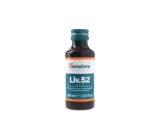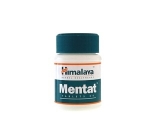Amoxicillin clavulanate potassium
Looking for a reliable antibiotic to treat your bacterial infections? Amoxicillin Clavulanate Potassium is the answer you've been searching for. This medication is used to treat a variety of bacterial infections such as bronchitis, sinusitis, pneumonia, and urinary tract infections.
Amoxicillin Clavulanate Potassium is highly effective due to its combination of two active ingredients - amoxicillin and clavulanate potassium. These two ingredients work together to kill the bacteria causing the infection and also prevent the bacteria from becoming resistant to the antibiotic.
Not only is Amoxicillin Clavulanate Potassium effective, it is also easy to use. It comes in the form of tablets and oral suspension, allowing for convenient and customizable dosing. Additionally, it is generally well-tolerated by patients, with few side effects.
Before starting any medication, it's important to consult with your healthcare provider. They will be able to determine if Amoxicillin Clavulanate Potassium is the right choice for your infection, as well as advise you on dosage and any potential interactions with other medications you may be taking.
Don't let a bacterial infection slow you down. Choose Amoxicillin Clavulanate Potassium for a fast and effective solution. Your health is worth it.
Overview of Amoxicillin Clavulanate Potassium
What is Amoxicillin Clavulanate Potassium?
Amoxicillin Clavulanate Potassium is a medication used to treat bacterial infections. It is a combination of two antibiotics, amoxicillin and clavulanate potassium.
How Does Amoxicillin Clavulanate Potassium Work?
Amoxicillin works by stopping the growth of bacteria, while clavulanate potassium helps to prevent certain bacteria from becoming resistant to the antibiotic.
Uses of Amoxicillin Clavulanate Potassium
Amoxicillin Clavulanate Potassium is used to treat a variety of bacterial infections, including:
- Ear infections
- Sinus infections
- Respiratory infections
- Skin infections
- Urinary tract infections
Dosage and Administration
The dosage and duration of treatment will vary depending on the type and severity of the infection. It is important to follow the instructions provided by your healthcare provider and to take the medication as directed.
Side Effects
Like all medications, Amoxicillin Clavulanate Potassium may cause side effects, including:
- Nausea
- Vomiting
- Diarrhea
- Rash
- Headache
If you experience any severe side effects or an allergic reaction, seek medical attention immediately.
Conclusion
Amoxicillin Clavulanate Potassium is a medication prescribed to treat bacterial infections. It is important to follow the dosage and administration instructions provided by your healthcare provider and to watch for any potential side effects. If you have concerns or questions about this medication, consult with your healthcare provider.
Uses
Bacterial Infections
Amoxicillin clavulanate potassium is commonly used for the treatment of bacterial infections like pneumonia, bronchitis, sinusitis, and urinary tract infections.
Dental Infections
The combination of amoxicillin and clavulanate potassium is also effective in treating dental infections like periodontitis and dental abscesses.
Skin and Soft Tissue Infections
Amoxicillin clavulanate potassium is often prescribed for skin and soft tissue infections such as cellulitis and impetigo.
Treatment and Prophylaxis of Bacterial Endocarditis
The drug is used in both the treatment and prophylaxis of bacterial endocarditis, an inflammation of the lining of the heart and its valves caused by bacteria.
Treatment of Helicobacter pylori
The combination of amoxicillin and clavulanate potassium is also used in the treatment of Helicobacter pylori, a bacterium that causes stomach ulcers.
Treating Bacterial Infections
What are bacterial infections?
Bacterial infections are caused by harmful bacteria that enter the body through various means such as contaminated food, water or contact with an infected person. The symptoms of bacterial infections vary depending on the severity and type of bacteria involved. These symptoms may include fever, chills, fatigue, nausea, vomiting, diarrhea and respiratory problems.
How can amoxicillin clavulanate potassium help?
Amoxicillin clavulanate potassium is an antibiotic medication that can help treat bacterial infections. It works by stopping the growth of bacteria and killing existing bacteria in the body. It is commonly prescribed for infections such as pneumonia, sinusitis, skin infections, and urinary tract infections.
One of the benefits of amoxicillin clavulanate potassium is that it can be used to treat a wide range of bacterial infections. For this reason, it is a popular choice among medical professionals. It is also easy to administer, either as a tablet or liquid form depending on the patient's preference.
What are the side effects?
Like any other medication, amoxicillin clavulanate potassium can have side effects. Some side effects may include diarrhea, nausea, stomach pain, vomiting, headache, or a skin rash. These side effects are usually mild and go away on their own within a few days of taking the medication.
Conclusion
Overall, amoxicillin clavulanate potassium is a highly effective medication for treating bacterial infections. It is safe, easy to use, and widely prescribed. If you think you may be experiencing symptoms of a bacterial infection, it is important to consult with a medical professional to determine the best course of treatment.
Dosage
Adults
For respiratory tract infections, urinary tract infections, skin and soft tissue infections, and dental infections, the recommended dosage is 500 mg amoxicillin and 125 mg clavulanate potassium every 8 hours or 875 mg amoxicillin and 125 mg clavulanate potassium every 12 hours.
Doses may vary based on the severity of the infection and the patient's response to treatment.
Children
The dosage of amoxicillin and clavulanate potassium for children depends on their weight, age, and the type of infection. A pediatrician should be consulted to determine the appropriate dosage.
- For most infections, the usual dose is 25 mg/kg/day of the amoxicillin component in divided doses every 12 hours or 20 mg/kg/day in divided doses every 8 hours.
- The maximum recommended daily dose is 45 mg/kg.
Renal Impairment
In patients with severe renal impairment, the dosage of amoxicillin/clavulanate potassium should be adjusted to avoid excess accumulation of amoxicillin.
| CrCl (ml/min) | Amoxicillin/clavulanate potassium Dosage |
|---|---|
| 30-49 | 500 mg/125 mg every 12 hours or 875 mg/125 mg every 24 hours |
| 10-29 | 500 mg/125 mg every 24 hours |
| <10 | 500 mg/125 mg every 48 hours |
Patients with end-stage renal disease should not receive more than 500 mg amoxicillin every 12 hours or 250 mg every 8 hours.
Recommended Dosing
Adults:
For most infections, a dose of 875 mg/125 mg every 12 hours for 7 to 10 days is recommended. For more severe infections, such as pneumonia or complicated urinary tract infections, a dose of 875 mg/125 mg every 8 hours may be prescribed.
Pediatric Patients:
The recommended dose for children is based on the weight of the child. The typical dose is 45 mg/kg/day of amoxicillin and 6.4 mg/kg/day of clavulanate potassium divided in two doses every 12 hours for 10 days. For more severe infections, the dose may be increased up to 90 mg/kg/day of amoxicillin and 12.9 mg/kg/day of clavulanate potassium divided in two doses every 8 hours.
Renal Impairment:
Dosing should be modified in patients with creatinine clearance less than or equal to 30 mL/min. In these patients, the dose should be lowered and the frequency of dosing decreased.
For patients on hemodialysis, a dose of 875 mg/125 mg every 24 hours or 500 mg/125 mg every 12 hours is recommended.
Missed Dose:
If a dose is missed, it should be taken as soon as possible. However, if it is almost time for the next dose, skip the missed dose and continue with the regular dosing schedule. Do not take a double dose to make up for the missed dose.
Duration of Therapy:
The duration of therapy should be determined by the type and severity of infection being treated. It is important to complete the full course of therapy as prescribed by your healthcare provider, even if symptoms improve before the medication is finished.
Side Effects
Common Side Effects
It is common to have some side effects when taking Amoxicillin Clavulanate Potassium. The most common side effects are:
- Nausea and vomiting
- Diarrhea
- Headache
- Difficulty sleeping
- Changes in taste
If you experience any of these side effects, they will usually go away after a few days. You can also speak to your doctor about ways to manage these side effects.
Serious Side Effects
Although rare, there are also some serious side effects that may occur when taking Amoxicillin Clavulanate Potassium. These include:
- Allergic reactions such as difficulty breathing, swelling of the face or throat, and hives
- Severe diarrhea or stomach cramps
- Yellowing of the skin or eyes
- Unusual bleeding or bruising
- Seizures
If you experience any of these side effects, seek medical attention immediately.
Precautions to Take
It is important to take precautions when taking Amoxicillin Clavulanate Potassium to reduce your risk of experiencing any negative side effects. Some precautions you can take include:
- Informing your doctor of any other medications you are taking, as they may interact with Amoxicillin Clavulanate Potassium
- Not taking Amoxicillin Clavulanate Potassium if you have a history of liver disease
- Staying hydrated to reduce the likelihood of experiencing diarrhea
- Avoiding alcohol while taking Amoxicillin Clavulanate Potassium
| Important Note: | Do not stop taking Amoxicillin Clavulanate Potassium without consulting your doctor, even if you feel better. This medication should be taken for the entire prescribed duration to ensure the effective eradication of the infection. |
|---|
Common Side Effects
Nausea and Vomiting
One of the most common side effects of Amoxicillin Clavulanate Potassium is nausea and vomiting. This is typically mild and can be managed with over-the-counter anti-nausea medications.
Diarrhea
Another common side effect is diarrhea. This is usually mild and goes away on its own without treatment. However, if the diarrhea is severe or lasts more than a few days, you should contact your doctor.
Headache
Headaches are another common side effect of Amoxicillin Clavulanate Potassium. These headaches are typically mild and can be managed with over-the-counter pain relievers.
Allergic Reactions
In rare cases, Amoxicillin Clavulanate Potassium can cause an allergic reaction. Symptoms of an allergic reaction include hives, rash, itching, difficulty breathing, and swelling of the face, lips, tongue, or throat.
- If you experience any of these symptoms, seek emergency medical attention.
- Do not take Amoxicillin Clavulanate Potassium again if you have had an allergic reaction to it in the past.
Other Side Effects
Other uncommon side effects of Amoxicillin Clavulanate Potassium include:
- Yellowing of the skin or eyes
- Abdominal pain
- Dark urine
- Fever
- Joint pain
- Trouble breathing
If you experience any of these side effects or have any other concerns about taking Amoxicillin Clavulanate Potassium, talk to your doctor.
Precautions
Consult Your Doctor
Before taking Amoxicillin Clavulanate Potassium, consult with your doctor if you have any allergies, liver problems, kidney problems, or a history of jaundice or hepatitis. It is also important to inform your doctor about any medications you are currently taking to avoid any potential drug interactions.
Pregnancy and Breastfeeding
If you are pregnant or breastfeeding, consult with your doctor before taking Amoxicillin Clavulanate Potassium. This medication may not be safe for the baby and can even cause harm if used unnecessarily.
Complete the Course
It is important to complete the full course of Amoxicillin Clavulanate Potassium as prescribed by your doctor, even if you start feeling better before the course is finished. Stopping the medication early can lead to infection recurrence or antibiotic resistance.
Alcohol Intake
Consuming alcohol while taking Amoxicillin Clavulanate Potassium can lead to increased side effects and make it harder for your body to process the medication. Avoid consuming alcohol or any products containing alcohol while taking this medication.
Side Effects
If you experience any severe side effects while taking Amoxicillin Clavulanate Potassium, such as difficulty breathing, severe rash, or swelling of the face, contact your doctor immediately and seek medical attention.
- Common side effects include diarrhea, nausea, vomiting, and headache.
- Less common side effects include skin rash, hives, and anaphylaxis.
Storage
Store Amoxicillin Clavulanate Potassium in a cool, dry place away from children and pets. Do not use outdated medication or medication that has been stored improperly.
Conditions to Consider
Bacterial Infections
Amoxicillin clavulanate potassium is used to treat bacterial infections such as pneumonia, bronchitis, sinusitis, and urinary tract infections. It works by killing the bacteria responsible for the infection and preventing the growth of new bacteria.
Side Effects: Diarrhea, nausea, vomiting, and skin rash are some of the common side effects of amoxicillin clavulanate potassium. If you experience any serious side effects such as severe abdominal pain, yellowing of the skin or eyes, or allergic reactions such as hives, seek medical attention immediately.
Dental Infections
This medication is also used to treat dental infections such as periodontitis and abscesses. It works by stopping the growth of the bacteria responsible for the infection, relieving the pain and swelling associated with dental problems.
Precautions: If you have a history of allergic reactions to penicillin, cephalosporins, or other medications, inform your doctor before taking amoxicillin clavulanate potassium. This medication may interact with other drugs, so inform your doctor about any medications or supplements you are taking.
Skin Infections
Amoxicillin clavulanate potassium is also used to treat skin infections such as impetigo and cellulitis. It works by preventing the growth of bacteria and reducing the inflammation and redness associated with these infections.
Dosage: The dosage and duration of treatment may vary depending on the severity of the infection, your age, weight, and overall health. Follow your doctor's instructions and finish the entire course of medication even if you feel better before the prescribed time.
Conclusion: Amoxicillin clavulanate potassium is a highly effective medication used to treat various bacterial infections. It is important to take the medication as directed by your doctor, inform them of any allergies or medications you are taking and report any serious side effects immediately. With proper use, this medication can help relieve symptoms and prevent complications associated with infections.
Benefits of Amoxicillin Clavulanate Potassium
Effective Against Many Bacterial Infections
Amoxicillin Clavulanate Potassium is a broad-spectrum antibiotic. This means that it can effectively treat a range of bacterial infections, such as pneumonia, bronchitis, ear infections, urinary tract infections, and skin infections.
Combination of Two Antibiotics
Amoxicillin Clavulanate Potassium is a combination of two antibiotics, namely amoxicillin and clavulanate potassium. This combination makes it more powerful and effective in treating bacterial infections.
Safe for Many People
Amoxicillin Clavulanate Potassium is generally safe for many people, including pregnant women. However, it is always important to consult with your doctor before taking any medication.
Easy to Take
Amoxicillin Clavulanate Potassium comes in tablet, capsule, and liquid form. This makes it easy to take, regardless of your preference or the severity of your infection.
Fast Relief
Amoxicillin Clavulanate Potassium is known to work quickly to relieve symptoms of bacterial infections. This means that you can start feeling better within a few days of taking the medication.
Affordable and Widely Available
Amoxicillin Clavulanate Potassium is an affordable drug that is widely available in many pharmacies and online. This makes it accessible to many people who need it.
Follow us on Twitter @Pharmaceuticals #Pharmacy
Subscribe on YouTube @PharmaceuticalsYouTube





Be the first to comment on "Amoxicillin clavulanate potassium"